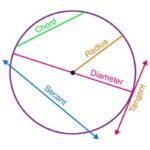Top 4 Learning Style Models – Debates Surrounding Them
Table of Contents:
Historical Perspective on Learning Styles
VARK Model
Visual (V)
Auditory/Aural (A)
Read/Write (R)
Kinesthetic (K)
Gardner’s Multiple Intelligences
Linguistic
Logical-mathematical
Spatial
Bodily-kinesthetic
Musical
Interpersonal
Intrapersonal
Naturalist
Existential
Kolb’s Experiential Learning Theory
Concrete Experience (CE)
Reflective Observation (RO)
Abstract Conceptualisation (AC)
Active Experimentation (AE)
Gregorc’s Mind Styles Model
Concrete Sequential (CS)
Abstract Sequential (AS)
Abstract Sequential learners operate in the realm of theories, concepts, and ideas. They have an affinity for logical reasoning, detailed analysis, and structured thinking. While they may not always require tangible experiences as the Concrete Sequential learners do, they need clarity in thought and a well-defined structure in information. Reading, writing, and research typically appeal to these individuals.
Concrete Random (CR)
Individuals with a Concrete Random style are instinctive problem solvers. They rely on their intuition and often come up with innovative solutions to challenges. They are hands-on learners but, unlike the Concrete Sequential style, they don’t necessarily need a structured approach. They tend to experiment, take risks, and explore multiple avenues to find solutions.
Abstract Random (AR)
Abstract Random learners are holistic thinkers. They are deeply attuned to emotions, relationships, and interpersonal dynamics. These individuals learn best through personal connections, stories, and discussions. They thrive in collaborative environments and often require a personal or emotional connection to the subject matter to engage deeply.
Gregorc’s Mind Styles Model offers a unique lens through which we can understand learning preferences. By focusing on the cognitive aspect of learning – how individuals think and process information – the model provides valuable insights for educators, parents, and learners to tailor educational experiences that align with innate cognitive strengths.
Debates and Critiques Surrounding Learning Styles
The concept of learning styles has permeated educational theory and practice for several decades, garnering both ardent supporters and sceptics. While the idea that individuals might have unique learning preferences is intuitively appealing, the empirical evidence supporting its efficacy in enhancing learning outcomes remains contentious. Here’s an overview of the major debates and critiques:
Empirical Support
One of the primary criticisms against learning styles is the lack of robust empirical evidence supporting their impact on learning outcomes. Many studies fail to conclusively demonstrate that tailoring instruction to an individual’s preferred style results in improved learning or retention of information.
Definitions and Overlaps
The multitude of learning styles models, each with its own set of definitions and categories, can be confusing. There’s significant overlap between models, leading some critics to argue that the distinctions are arbitrary or overly simplistic.
Fluidity of Learning Preferences
Some educational researchers argue that learning preferences aren’t static. Instead, they may evolve based on context, content, or experience. A student might prefer visual aids for a subject like biology but find auditory explanations more useful for another subject like history.
Potential for Misclassification
There’s concern that labelling students based on a particular style might pigeonhole them, potentially limiting their exposure to other learning methods. Additionally, self-assessment tools, commonly used to determine one’s learning style, might not always be accurate, leading to potential misclassification.
Overemphasis on Adaptation
Critics argue that an overemphasis on adapting teaching methods to learning styles might detract from focusing on more effective, evidence-based teaching strategies. There’s also a risk that educators might oversimplify or reduce content to cater to a specific style, potentially compromising the depth of instruction.
Benefit of Multimodal Teaching
Instead of seeing styles as mutually exclusive categories, some argue for the benefits of a multimodal teaching approach. By incorporating various methods – visual, auditory, kinesthetic, etc. – educators can provide a richer, more comprehensive learning experience. This approach can be enhanced by implementing proven active recall techniques, which benefit students regardless of their preferred learning style.
In conclusion, while the concept of learning styles offers an intriguing framework for understanding individual differences in learning, its practical application in education remains a topic of debate. As with many pedagogical approaches, it’s essential to remain open-minded and critically evaluate the benefits and limitations, ensuring that the primary goal remains: effective, inclusive, and comprehensive education.
Practical Implications for Educators
The debates surrounding learning styles, regardless of where one stands, have underscored the importance of acknowledging individual differences in the classroom. While the rigid adherence to specific learning styles may be debated, the underlying idea has catalysed a broader movement towards more flexible, adaptable, and student-centred teaching methods. Here are some practical implications for educators based on the learning styles discourse:
Diverse Instructional Strategies
Even if not strictly adhering to learning styles, educators can benefit from using a mix of instructional strategies. Incorporating visuals, discussions, hands-on activities, and reading assignments ensures that students receive information in various formats, potentially increasing engagement and comprehension.
Adaptive Teaching
Recognising that not all students respond to the same teaching methods, educators might consider adopting a more adaptive approach, adjusting their strategies based on student feedback, assessments, and observable engagement.
Emphasis on Self-awareness
Encouraging students to understand their learning preferences, even informally, can foster self-awareness. This understanding can help students develop effective study habits, seek out resources that suit their preferences, and advocate for their learning needs.
Avoiding Over-reliance on Labels
While understanding of different learning preferences can be insightful, educators should be wary of pigeonholing students or making assumptions based solely on these labels. It’s vital to see each student as a unique individual with a range of capabilities and preferences.
Promote Multimodal Learning
Given the potential fluidity of learning preferences, educators can promote a multimodal approach. This doesn’t just mean mixing visuals, audio, and hands-on activities but also integrating digital tools, collaborative projects, and independent research to provide a holistic learning experience.
Continuous Feedback Loop
Establishing a continuous feedback loop with students can offer insights into which methods are working and which might need adjustments. This approach allows educators to remain responsive to students’ needs and refine their teaching strategies accordingly.
Professional Development
Educators can benefit from professional development sessions that introduce them to diverse teaching strategies, technological tools, and the latest research on effective instruction. Keeping updated with pedagogical developments ensures they are equipped to provide the best learning experiences.
In essence, the discourse on learning styles, regardless of its empirical standing, reminds educators of the diversity inherent in any classroom. By staying adaptable, seeking feedback, and continuously refining their approaches, educators can strive to meet the diverse needs of their students, ensuring a richer, more inclusive learning environment.
Conclusion
In the ever-evolving landscape of education, understanding individual preferences and differences isn’t just a luxury, but a necessity. With each learner standing at the confluence of multiple influences – culture, upbringing, experiences, and innate cognitive structures – there’s a poetic complexity to how we learn. But within this intricate dance lies a universal truth: education, at its core, is about human connection.
Enter Edumentors, not just as another tutoring platform, but as a testament to the profound impacts of peer mentorship and guidance. Learning isn’t merely the transmission of knowledge but also a journey of self-discovery and empowerment. The bridge between today’s uncertainties and tomorrow’s potentials can often be a single conversation, an understanding nod, or a shared struggle. And who better to guide young learners through these academic mazes than those who have recently navigated them?
The tutors at Edumentors, students from the UK’s elite academic institutions, embody more than just subject mastery. They represent resilience, ambition, and the sheer power of mentorship. Understanding the importance of role models in education is key to appreciating why these peer relationships are so transformative. In their guidance, students not only find clarity in complex equations or historical timelines but also witness a mirror of what’s achievable, instilling a newfound confidence.
FAQs:
What are the 4 learning styles?
The 4 learning styles in the VARK model are Visual, Aural/Auditory, Read/Write, and Kinesthetic. Many pupils are multimodal, so mix methods. Use diagrams, discussion, note-making, and hands-on tasks to strengthen learning.
Which learning style models are most used?
Common learning style models include VARK (4 learning styles), Honey & Mumford (Activist, Reflector, Theorist, Pragmatist), Kolb’s learning styles linked to the experiential cycle, and Gregorc’s Mind Styles. These models appear in schools, teacher training, and CPD.
Which learning style theory is most discussed in the UK?
VARK is widely referenced, but Honey & Mumford and Kolb are also popular. UK evidence bodies caution against labelling. Instead, use varied teaching aligned to goals, not a single style. This balances different learning styles in UK classrooms.
How do learning models differ from learning theories?
Learning models (e.g., VARK, Honey & Mumford) are practical frameworks for study or teaching tactics. Learning theories (e.g., behaviourism, cognitivism, constructivism, humanism, connectivism) explain how learning occurs. Combine theories to design lessons, then apply models to choose methods.
How do learning models differ from learning theories?
Learning models (e.g., VARK, Honey & Mumford) are practical frameworks for study or teaching tactics. Learning theories (e.g., behaviourism, cognitivism, constructivism, humanism, connectivism) explain how learning occurs. Combine theories to design lessons, then apply models to choose methods.









